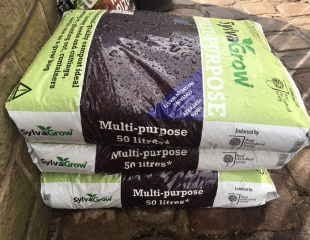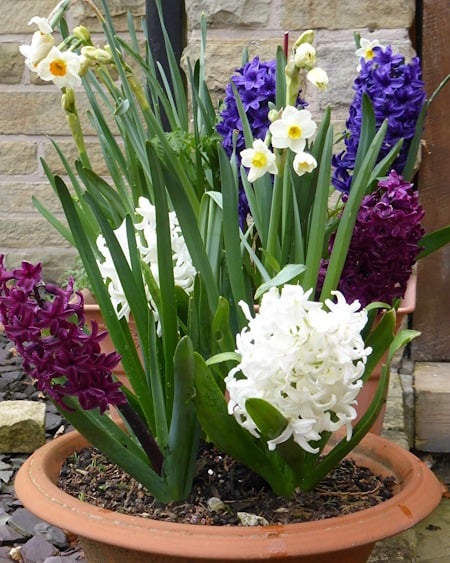Re use old compost for spring bulbs and save money
During autumn, we love to plant bulbs to provide spring colour.
The bulbs are expensive, especially Tulips, which are often treated as annuals, and compost is also costly. The good news is you do not need fresh compost when planting new bulbs, and here is why.
Save money on expensive compost

As a structure, a new bulb contains all the food and nutrients (apart from water) necessary for the bulb to grow and flower. New bulbs are little power packs and do not need additional nutrients.
Save and reuse compost from any end-of-season containers you are emptying, provided it is healthy compost. This should be apparent if the plants you had previously grown in it were healthy.
Whenever you are planting new bulbs, and this only works for new bulbs, old compost is fine.
New spring bulbs from last year, still in containers, need replanting, and they will need new compost. Melcourt Sylvagrow is excellent compost, and it's my compost of choice, but it comes at a price. We are all trying to save money, so keep the expensive compost for the plants that really need it.
More money saving gardening tips.
More about growing spring bulbs and information on why my spring bulbs don't flower.
Video advice Planting spring bulbs Using Old Compost
This is a short 3-minute video that demonstrates how to plant spring bulbs in containers and the importance of the correct planting depth. It also explains when you can use old, spent compost for planting new bulbs to save money by using old compost.
What else can I do with old compost

Other uses of old compost:
Old compost makes an ideal mulch on borders to aid water retention and reduce weeding
Dig /leave on the surface of borders and veg areas to add organic matter into the soil and improve the structure
Sprinkle on bare patches on lawns before reseeding
Add to compost bins to vary the mix
Lay down a layer of old compost at the bottom of containers before adding fresh compost for shallow-rooted bedding plants. It's expensive to fill a whole container with fresh compost and often not necessary.
Sieved old compost is ideal for growing carrots.
Mix with fresh compost and add to your vegetable plot to top up soil and nutrients.
